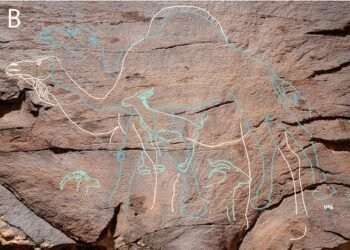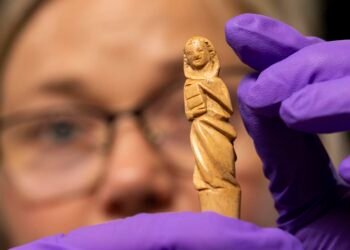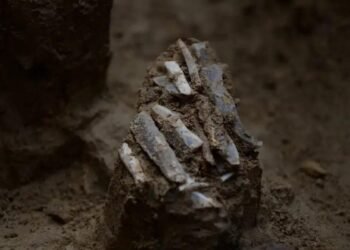A recent discovery in the Republic of Georgia is giving a new glimpse into the earliest humans to settle beyond Africa. Scientists digging at the Orozmani site, about 60 miles south of Tbilisi, uncovered a 1.8-million-year-old lower jawbone of Homo erectus. The fossil is one of the oldest human remains ever recovered outside of Africa and further establishes Georgia as an important region for the study of early human migration.

The jawbone was unearthed this summer in a small dig area, no larger than two parking spaces, in the Kvemo Kartli region of Georgia. The location, although modest in size, has yielded remarkable discoveries. In 2022, researchers already discovered a human tooth from the same layer, which was the initial indication of early humans at Orozmani. The new jawbone, containing two preserved teeth, confirms that the site was once occupied by some of the first human groups to venture out of Africa.
Homo erectus emerged in Africa around two million years ago and is considered to be the first human ancestor to expand its range, reaching Europe, Asia, and even Oceania. Evidence of this migration is most well-documented at the nearby site of Dmanisi, just 12 miles from Orozmani, where over 100 fossil bones, including several skulls dated to around 1.8 million years ago, have been uncovered by archaeologists. The fossils led scientists to propose a new species, Homo georgicus, but they are now widely accepted as early Eurasian representatives of Homo erectus.
Geological dating shows that both Dmanisi and Orozmani are contemporaries, dating between 1.825 million and 1.765 million years ago. While a larger fossil collection has been recovered at Dmanisi, the discoveries at Orozmani demonstrate that the region was not inhabited by a single isolated population. Instead, multiple early human groups occupied the Caucasus soon after leaving Africa, adapting to new climates and landscapes.
Excavations at Orozmani have also uncovered a plethora of animal fossils, including saber-toothed tigers, elephants, wolves, deer, and even giraffes, alongside stone tools. These combined findings give some indication as to how these early humans were able to survive in Eurasia. The fact that large game was found alongside the tools suggests a hunter-gatherer lifestyle, with groups relying on hunting and scavenging to survive. Examining the diet, use of tools, and environmental context of such fossils has the potential to show how early humans adapted during their first steps into new territories.
In spite of the fact that only a jawbone and a tooth have been recovered so far, the site of Orozmani holds great scientific potential. Researchers believe it could contain clues to the pace and path of human migration, the diversity of early Homo erectus populations, and how these initial human populations managed to adapt so far from their African origins. The research is ongoing, and future excavation seasons are expected to expand the search area and deepen the understanding of what life was like nearly two million years ago in this part of Eurasia.
The discovery of the Orozmani jawbone not only complements the groundbreaking excavations at Dmanisi but also emphasizes Georgia’s status as one of the most important locations for following the trail of the earliest journeys of mankind.























Nice website and nice content This content will be helpful to me. Thank you.